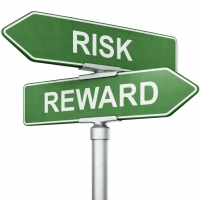 In the past year or more, we have met with a growing number of folks, ultraconservative in their current investment philosophy. They explain that they jerked their money from any stock or diversified investment portfolio years ago, some before and some after the sub-prime mortgage fiasco of 2008-09. They have never felt confident enough to re-enter the water, so to speak. What are they to do?
In the past year or more, we have met with a growing number of folks, ultraconservative in their current investment philosophy. They explain that they jerked their money from any stock or diversified investment portfolio years ago, some before and some after the sub-prime mortgage fiasco of 2008-09. They have never felt confident enough to re-enter the water, so to speak. What are they to do?
This situation and so many others like it call for this advice: Forget about what has happened or failed to occur, except for the educational profit of the experience. The real question must be, What is the next right (or wise) thing to do?
Whether they are invested in 5 year CD’s at 2 point something or 30 year US Treasuries yielding less than 3 percent, they know that this current artificial government subsidy for borrowers (and knife in the heart of savers!) will not protect them against running out of money in their old age. With inflation of 2 or more percent, they are truly lending their money out at less than 1 percent net return.
If we just knew when the next crash is coming, we could tell them to hold on and be ready to invest in the best long term investment vehicles known to man, stocks (or equities). Alas, we do not. But we do know it is closer in time now than we were yesterday. All cycles will end, whether good or bad.
You already know about the value of diversification of investment types and kinds. Another common reduction of risk is the practice of dollar cost averaging. This practice relies upon a person putting money each period, usually monthly, into a basket of diversified choices. So, as the price of Investment A drops in value, the same amount of dollars purchases more shares of it during that month. When A rises again, there is even more profit in those shares.
This works both on the accumulation side and the liquidation side of the equation. Averaging smooths out the highs and lows while you are saving money for later life. Because you are automatically putting money into your 401k plan by payroll deduction, you have a greater likelihood of steady gains over the intermediate to longer term. (However, if the end of the world occurs before you retire, it won’t matter so you can still be happy!)
The reverse is also true if you set up your distributions during retirement using this principle. As prices of your investments fluctuate, you can choose to take out the same number of dollars from each position each month. You will need to make some adjustments to rebalance the positions, at least annually in my opinion.
My conclusion is this. If the future is anything like the past 100 or more years, you could safely switch 1 percent per month into a good basket of investments for the longer term. If the crash never came (a doubtful proposition), then you will have averaged into an incredible gain by the end of 100 months. But when the crash most likely occurs before the period ends, you would want to buy the investment positions while they are on sale!
Consult your investment advisor and stop waiting for a perfect time that might not come within your lifetime.
